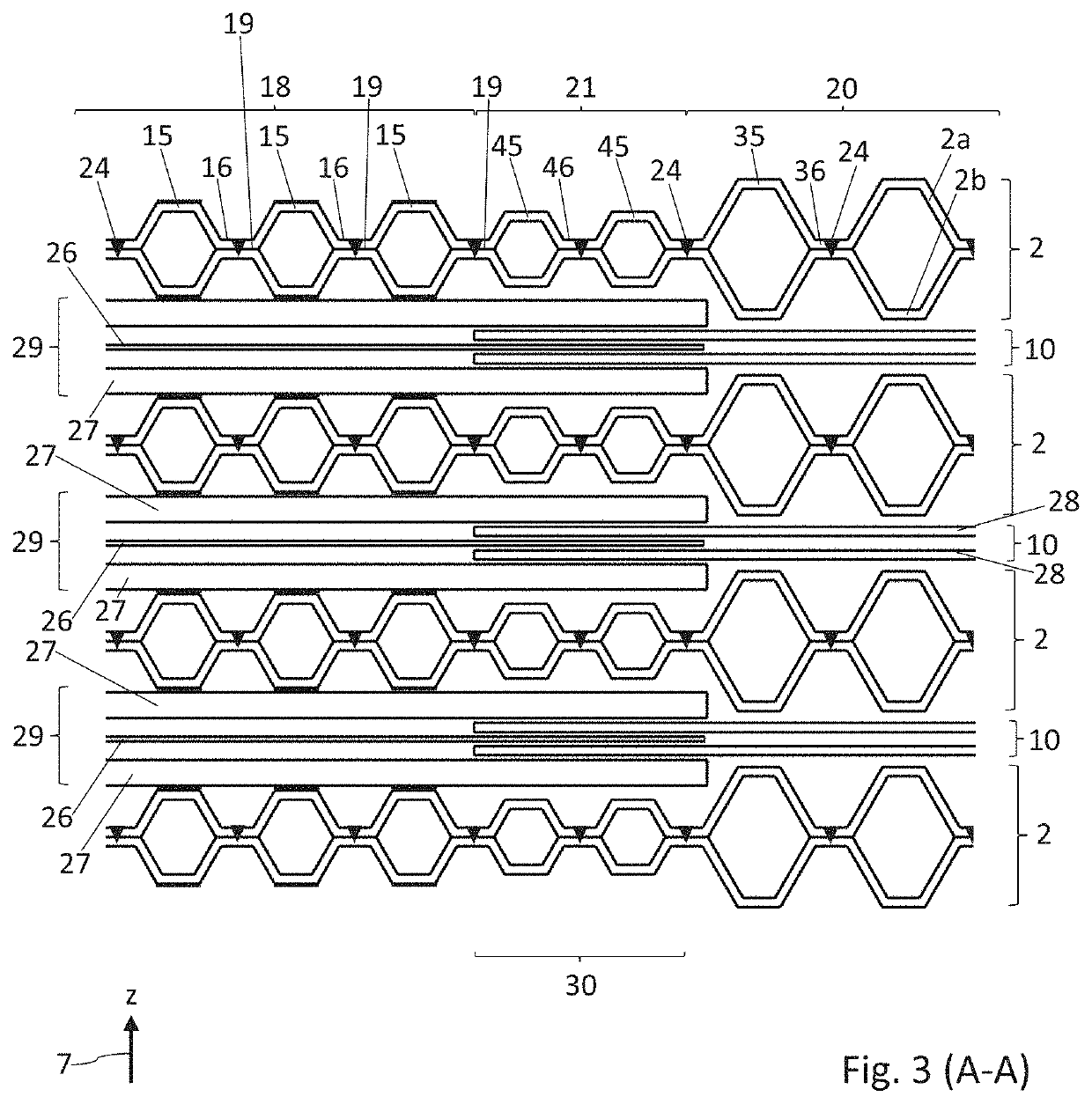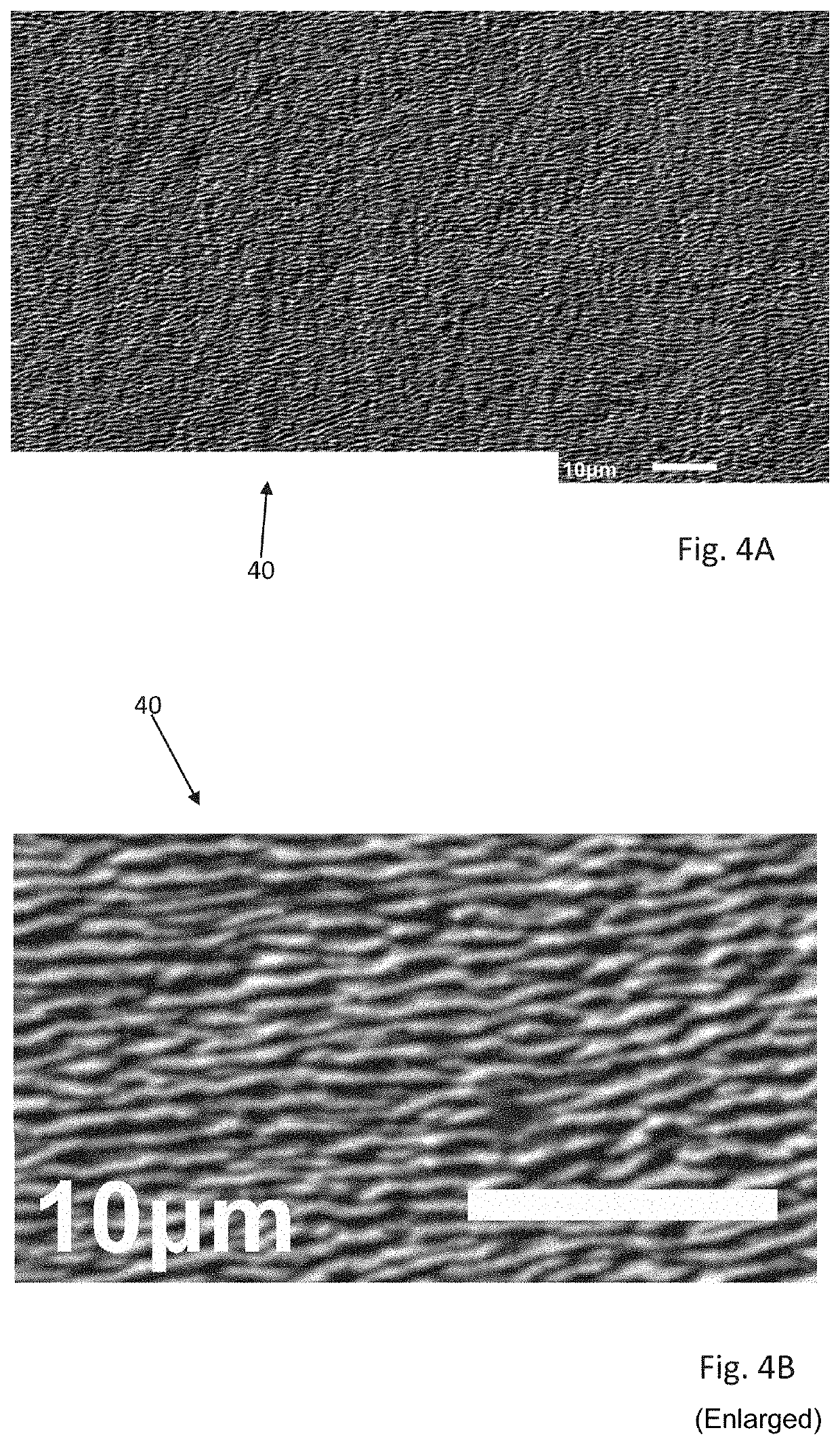Separator plate with periodic surface structures in the nanometer to micrometer range
a technology of periodic surface structure and separator plate, which is applied in the direction of laser beam welding apparatus, fuel cells, electrochemical generators, etc., can solve the problems of negative effect on the service life of separator plates, adversely affecting the function of separator plates to establish low-loss electrical connections, and tending to passivate, so as to achieve greater mechanical stability of metal and compact design of fuel cells
- Summary
- Abstract
- Description
- Claims
- Application Information
AI Technical Summary
Benefits of technology
Problems solved by technology
Method used
Image
Examples
Embodiment Construction
"d_n">[0076]FIG. 1 shows an electrochemical system 1 of the type proposed here, comprising a plurality of structurally identical metal bipolar plates 2 which are arranged in a stack and are stacked along a z-direction 7. The bipolar plates 2 of the stack are clamped between two end plates 3, 4. The z-direction 7 will also be called the stacking direction. The bipolar plates 2 usually each comprise two metal separator plates 2a, 2b which are connected to one another (see for example FIGS. 2 and 3). In the present example, the system 1 is a fuel cell stack. Each two adjacent bipolar plates 2 of the stack therefore enclose an electrochemical cell therebetween, which serves for example to convert chemical energy into electrical energy. The electrochemical cells usually each have a membrane electrode assembly (MEA) 10 (see for example FIGS. 2 and 3). The MEA typically contains in each case at least one membrane, for example an electrolyte membrane. Furthermore, a gas diffusion layer (GDL...
PUM
| Property | Measurement | Unit |
|---|---|---|
| width | aaaaa | aaaaa |
| width | aaaaa | aaaaa |
| diameter | aaaaa | aaaaa |
Abstract
Description
Claims
Application Information
 Login to View More
Login to View More - R&D
- Intellectual Property
- Life Sciences
- Materials
- Tech Scout
- Unparalleled Data Quality
- Higher Quality Content
- 60% Fewer Hallucinations
Browse by: Latest US Patents, China's latest patents, Technical Efficacy Thesaurus, Application Domain, Technology Topic, Popular Technical Reports.
© 2025 PatSnap. All rights reserved.Legal|Privacy policy|Modern Slavery Act Transparency Statement|Sitemap|About US| Contact US: help@patsnap.com



